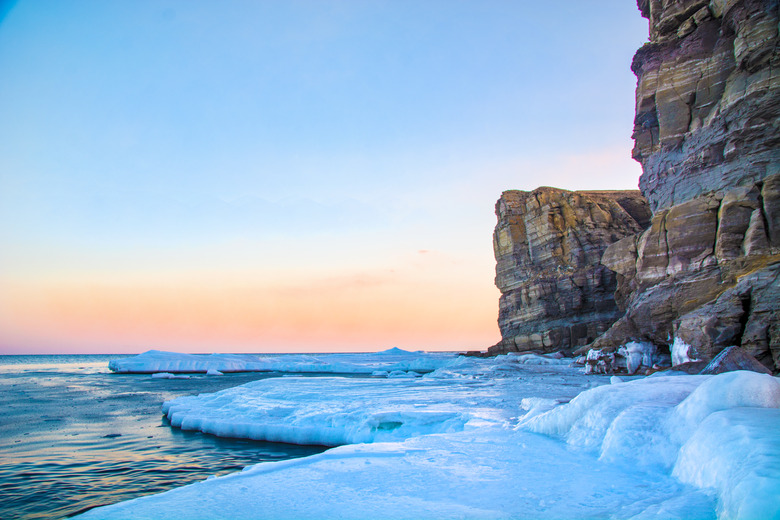How Does Weathering And Temperature Affect Rocks?
A chunk of solid rock in the hand–let alone a snowy peak on the horizon–might seem permanent and unchanging, an indestructible bone of Earth. Yet, like water or organic matter, rocks are constantly transformed.
Temperature is an essential part of rock creation, modification, destruction and ultimate rebirth. And, weathering is the first step in the breakdown of rock into smaller fragments. This process is critical to the the formation of landscapes and many other geological processes.
TL;DR (Too Long; Didn't Read)
Temperature plays a central role in rock melting and recreation, while weathering breaks large chunks of rock into gradually smaller ones.
Temperature
Temperature
In Earth's mantle, lava cools as it rises, forming solid rocks in our planet's crust. The lava forms when tectonic plates – the fractured slabs of crust – are shoved back down under each other into the mantle and melt. In this way, a balanced cycle of meting, rock formation and remelting continues through the ages.
At depth, slow-cooling lava forms coarse-grained, volcanic rock such as granite. Finer-grained rock such as basalt occurs when lava erupts or oozes to the surface and cools quickly. In metamorphic rocks, intense heat or pressure change the minerals of volcanic or sedimentary rocks. Metamorphism can occur at depth or at Earth's surface, whenever a sheet of lava flows over and bakes other rocks. (See References.
Weathering
Weathering
Weathering refers to a group of processes that pulverize rocks into smaller fragments. Think of mechanical weathering as rock-breaking. It is the result of physical forces such as the freeze-thaw cycle of water. Water trickles into joints and fractures in solid rock, freezes and expands. The expansion puts pressure on the surrounding rock and gradually widens the cracks. As water and ice penetrate more deeply, pressure eventually forces apart whole slabs of rock. Over time, frost action can reduce rock to silt-sized particles.
Chemical weathering is a rock-rotting process. It changes rock minerals when acidic water dissolves carbonate rocks or iron minerals are exposed to oxygen and form rust. In biological weathering, living organisms speed up the process of rock breakdown. Tree roots that pry apart rock fractures, for example, are biological agents of mechanical weathering.
Temperature and Weathering
Temperature and Weathering
Temperature affects the rate and type of weathering. At high elevations, cold nighttime temperatures during much of the year can produce relentless freeze-thaw cycles. This process explains the presence of broken boulders and stony fragments that litter mountaintops. And, the minerals in volcanic rock that formed at the highest temperatures and pressures are the most vulnerable to chemical weathering at Earth's surface.
Weathering and Landforms
Weathering and Landforms
Weathering is a powerful sculptor of landforms. Chemical weathering in carbonate rocks creates some of the planet's most outlandish terrain, the karst topography of dissected caverns and wild pillars. The aprons of scree and talus at the bases of sheer cliffs are made up of fragments broken off rock faces – mechanical weathering – and arranged by gravity in a related process called mass wasting.
Weathering also creates the crests, stacks and battlements of shattered rock called tors, which dot smoothly rolling plateaus, as in the enigmatic granite tors of Dartmoor in southwestern England.
Cite This Article
MLA
Shaw, Ethan. "How Does Weathering And Temperature Affect Rocks?" sciencing.com, https://www.sciencing.com/weathering-temperature-affect-rocks-4733/. 20 April 2018.
APA
Shaw, Ethan. (2018, April 20). How Does Weathering And Temperature Affect Rocks?. sciencing.com. Retrieved from https://www.sciencing.com/weathering-temperature-affect-rocks-4733/
Chicago
Shaw, Ethan. How Does Weathering And Temperature Affect Rocks? last modified March 24, 2022. https://www.sciencing.com/weathering-temperature-affect-rocks-4733/
